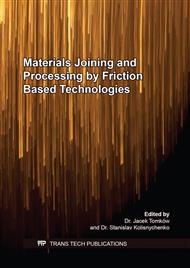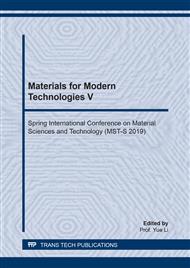p.14
p.21
p.30
p.38
p.45
p.51
p.58
p.62
p.70
Fatigue Property of Friction Stir Welded Butt Joints for 6156-T6 Aluminum Alloy
Abstract:
This study was conducted to investigate fatigue behavior of friction stir welding (FSW) butt joints for 6156-T6 aluminum alloy. The detail fatigue rating (DFR) values of 6156-T6 FSW joints is obtained based on statistical analysis of fatigue tests. The micrographs of weld structure were observed by optical microscope (OM), Fatigue fractography was researched under scanning electron microscope (SEM). The results indicate that DFR value of 6156-T6 FSW joints is 153.31MPa. Fatigue property of FSW butt joints is sensitive to the microstructural features, such as nugget zone (NZ), thermo mechanically affected zone (TMAZ) and heat affected zone (HAZ). The hardness distributions of the FSW joints reveal W-shaped profiles. Fractography shows that fatigue cracking is initiated at weak-bonding defects, which are located at the root site of the butt joint. The weak-bonding defects have obvious influence on the fatigue properties of friction stir welding.
Info:
Periodical:
Pages:
45-50
Citation:
Online since:
June 2019
Authors:
Price:
Сopyright:
© 2019 Trans Tech Publications Ltd. All Rights Reserved
Share:
Citation:



